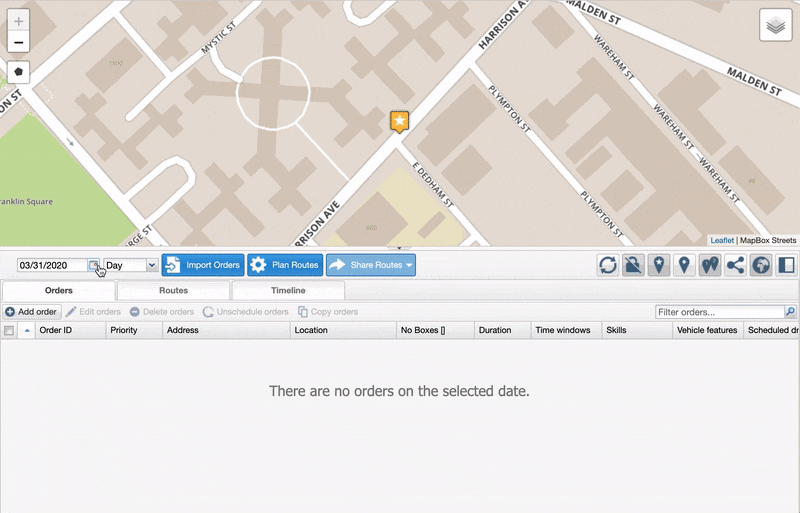How to Start and Optimize a Sealcoating Business

Sealcoating is a process that protects pavement by adding an extra layer of protection. Its goal is to prevent paved surfaces from deteriorating after exposure to weather and UV rays. It is a vital service that preserves the longevity of roads, driveways, and any other paved surface, making sealcoating popular among both commercial and residential customers.
According to recent data, the sealcoating industry was valued at $1.3 billion in 2020 and is expected to grow by 4% in the next five years. This makes now an excellent time to start your sealcoating business.
To start a sealcoating business that maximizes profits, you need to keep your costs low and improve efficiency. Planning service routes in advance, route optimization, and workload balancing helps lower costs and increase productivity, so your new business can thrive.
Jump to the part that most interests you:
- How to Start a Sealcoating Business in 7 Steps
- Routing and Scheduling: Two Key Challenges of Operating a Sealcoating Business
- Use OptimoRoute to Boost Efficiency and Productivity
How to Start a Sealcoating Business in 7 Steps
To start a sealcoating business, you must first define your target market and outline a business plan. Then you’ll need to fund and register your business, as well as obtain licenses, permits, and the right tools to do the job. After that, you can develop a marketing strategy to build a customer base and begin to make a profit by completing jobs.
1. Identify a target market and service area
To start a sealcoating business, you need to know who your target market is and what kind of sealcoating services they need most. Start by outlining your service area. Evaluate what your mileage costs are and determine how far you are willing to drive from your operation’s base to provide services based on those costs.
After assessing your service area, consider what type of customers are located within your service area. You might provide services to residential, commercial, or public customers, or a combination of the three. The customers you serve will determine what types of sealcoating jobs you do. For example, if your business is based within a large city, then you will likely have primarily commercial and public customers that need parking lots, sidewalks, and city streets sealcoated. However, if your business is located in a more suburban or rural area, then your primary customers will likely be residential property owners who need sealcoating services to prevent and fill cracks in their driveways.
2. Create a business plan
A good business plan acts as a roadmap to success. It clearly explains the objectives of your business and outlines steps you can take to reach your goals. A good business plan can also help you bring on investors to fund your business by showing them that you have a clear vision of how it will succeed.
To build a business plan, you first need to write a description of your business, your customers, and the services you provide. There are a variety of services, including crack filling, striping, and general pavement maintenance. After you’ve done this, you can outline your business model and begin setting goals. If you’ve never done this before, you can consult the Small Business Administration’s website, which is full of resources that can help guide you.
3. Get a startup loan (if necessary)
Starting a sealcoating business isn’t cheap. You’ll need to pay for a variety of things, including tools, office space, and contractor licenses, before you can start doing business. These costs add up quickly. You might have the money you need and won’t require help funding your business. Unfortunately, this is highly uncommon. Most sealcoaters will need to get a business loan to start their business.
Before you go to the bank to ask for a loan, figure out how large of a loan you need by totaling all of your startup costs. Once you know how much you need, go to local banks and credit unions to apply for a small business loan. When you apply for a loan, make sure to consider factors like interest and repayment rate, so you know how much of your business profits to set aside for repayment.
4. Register your business
Registering your business makes it a legitimate legal entity by informing the government what kind of business you operate. This also helps you stay compliant with state and federal regulations by making it possible for your business to get a tax ID number. It is also vital if you plan to hire employees or take out loans. For many small businesses, all you need to do is register your business name as either a trademark, entity, domain name, or doing business as (DBA). Do research to find out what type of registration makes sense for your business by consulting local regulators or asking others in the sealcoating industry for advice.
5. Acquire any relevant licenses and permits
You need a license, whether you’re working as an independent sealcoater or managing a team of full-time and part-time sealcoaters. The specific licenses you need may vary depending on where your business is based. In most states, sealcoating is considered a contracting specialization that requires all technicians to have a general contractor’s license. Do your own research to see what is required in your locale by doing a Google search or consulting your local regulatory office for guidance.
6. Purchase equipment and tools
You can’t sealcoat a driveway or any other pavement without the proper tools. You’ll need a sealcoating machine and spray system, as well as equipment designed to help you remove debris, clean the pavement, and apply spot remover. This includes tools like push brooms, brushes, squeegees, sprayers, and a pressure washer. You’ll also need oil spot remover and the chemical sealants used to treat paved surfaces like cement or asphalt. Consider what types of services you’ll be completing to determine the type of tools and sealants you need. For example, crack filling requires patching equipment, and asphalt surfaces need an asphalt emulsion sealer for proper pavement maintenance.
7. Create a marketing strategy
A marketing strategy outlines your goals to promote your business and grow your customer base. To create one, you should start by looking at your business plan. Then set marketing goals that will help you achieve your business goals. For example, say one of your business goals is to increase your annual profits. In this case, you should set a marketing goal of gaining new customers. Then you can brainstorm strategies to help you achieve that goal, like placing advertisements around town or using customer testimonials on your website.
Routing and Scheduling: Two Key Challenges of Operating a Sealcoating Business
You need to complete as many jobs as possible in order to maximize profits. The best way to do this is with route optimization, a process that improves overall routing efficiency for field service businesses.
Route optimization accounts for technicians’ schedules along with planned jobs to create routes that boost efficiency. Route optimization also lowers fuel costs by reducing overall mileage. Sealcoaters also need to consider additional factors. For example, which technicians are available and qualified for the job and when are they available, as well as where the job is and how long it will take.
This is an incredibly time-consuming task, especially if you do all of your field service management tasks manually. There are a lot of factors to consider if you want to plan efficient routes, including the distance between job sites, scheduled appointment times, technician skillsets, and schedules. Implementing routing software saves time by automating route optimization, which improves efficiency.
Use OptimoRoute to Boost Efficiency and Productivity
OptimoRoute is a route planning and optimization tool that streamlines workforce management tasks to help you boost the efficiency and productivity of your sealcoating company. It offers features like automated planning and workload balancing, which help to automate the routing process.

Automatically plan routes
Planning routes for sealcoating jobs is difficult. The length of time for each job can vary greatly depending on the size of the area and the specific service. This makes it difficult to effectively schedule appointments when you have multiple jobs to schedule and assign to technicians every day.
OptimoRoute alleviates the headache of manually planning routes by automating the process to save time and always get the best routes that simply work. The platform allows users to upload information about drivers, including their schedule and specialty. Users can also upload information about service appointments, including the location and how long the job will take. Then OptimoRoute uses this data to automatically generate the most optimal routes according to driver schedules.
Plan your schedule weeks ahead of time
The automated planning feature schedules routes up to five weeks in advance. Planning schedules in advance helps you be prepared so you can respond quickly to last-minute changes. It also improves your customer’s experience by allowing you to respond quickly when they call to schedule a service.
For example, say you get a call for a large job that will bring in a lot of money for your business. If your schedule is already done, then you’ll know exactly when you have time for that big job. You can schedule the customer immediately, eliminating the risk that you’ll lose their business to another company that can schedule them sooner.
Complete more jobs with the same workforce
Optimizing your routes cuts down on drive time by reducing travel time between job sites. This allows your team to complete more jobs on every route without expanding your team.
Real-time tracking and customer notification
If a customer calls to ask where a technician is or to schedule an emergency service, they expect you to be able to help them without delay. OptimoRoute helps you do this by providing Realtime Order Tracking, so your customers know exactly where your technicians is and how soon they will arrive to the jobsite.
Try our free 30-day trial to see how OptimoRoute can maximize profit and productivity for your business!
FAQs About Starting a Sealcoating Business
How much does it cost to start a sealcoating business?
There are a lot of startup costs for sealcoating businesses, including a sealcoating spray system, which costs at least $10,000, according to prices listed on the popular supply site Asphalt Kingdom. You also need to account for the costs of the other tools you need, insurance, and much more. This means that getting a sealcoating business up and running can cost you thousands of dollars.
What do you need to start a sealcoating business?
You need a variety of tools, including a sealcoating machine and spray system, brooms, and sealants. You’ll also need a business loan to buy tools and register your sealcoating company. Do more research to learn about the specific requirements for starting a sealcoating business in your area.
How profitable are sealcoating businesses?
Sealcoating is profitable. But exactly how much your business will make depends on multiple factors, including what your overhead costs are and how many sealcoating jobs you’re hired for.
Try OptimoRoute™ for Free
No installation or credit card required


